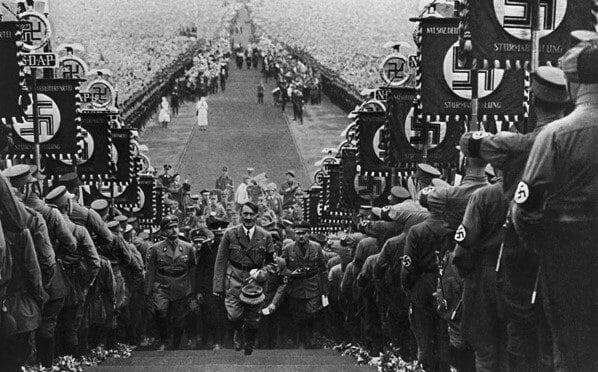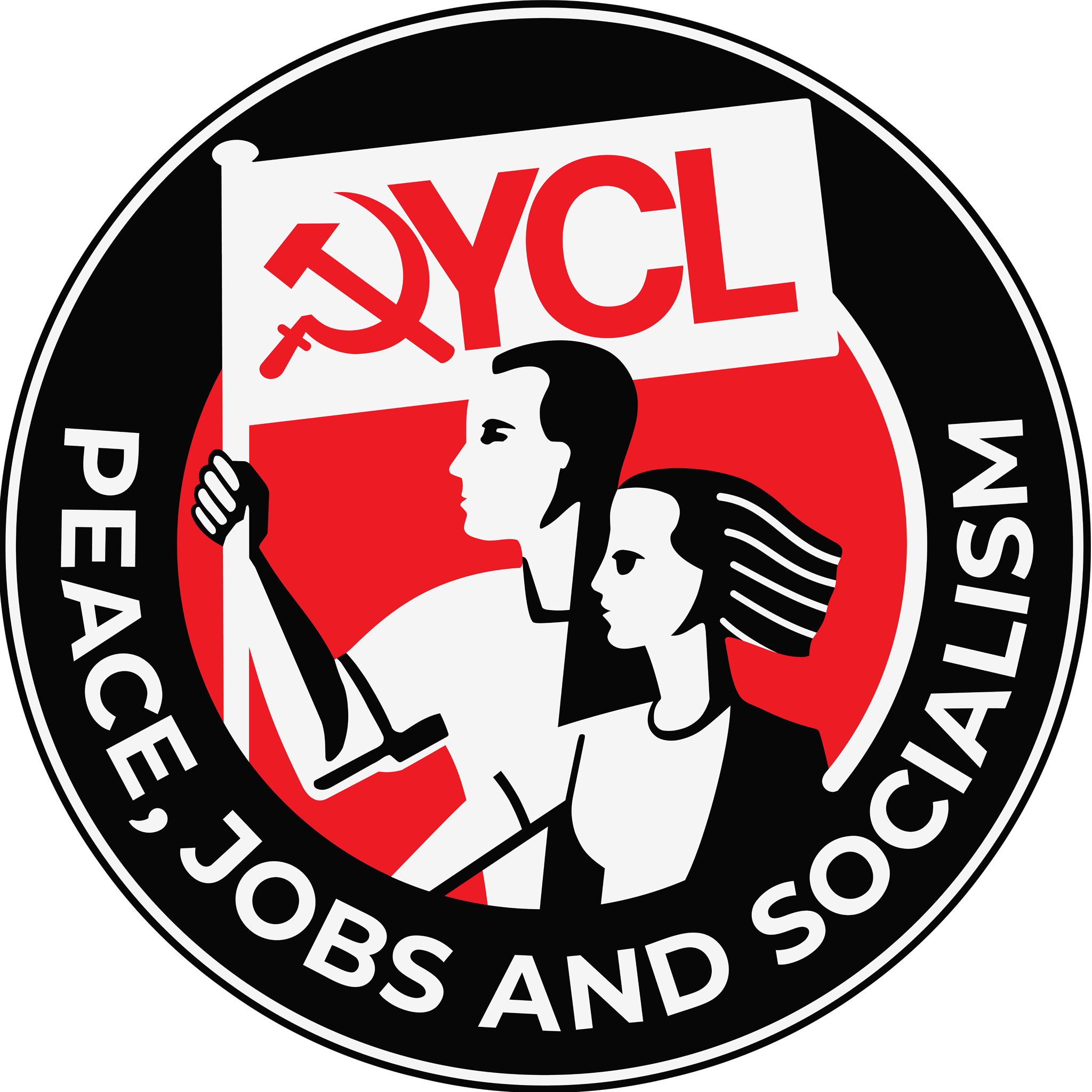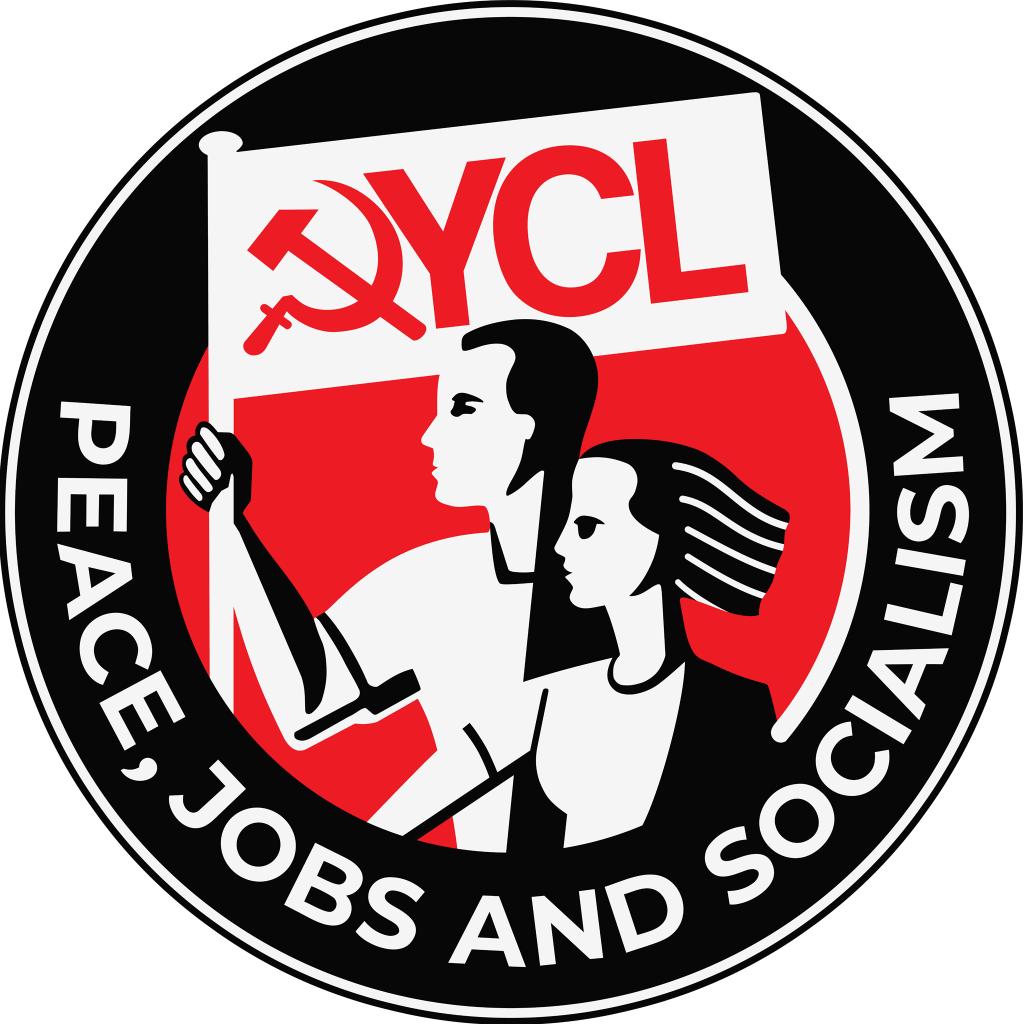Fascism is a term many are familiar with, however, a call to not only identify but actively combat fascism is sirening. The early 20th Century harboured many events which resonate throughout modern-day society as a whole, and one such event was World War Two. WWII saw the allied forces combatting a parasitic, mindlessly violent disease: fascism, and it was the communists who were on the front line of this fight, and who developed a comprehensive understanding of what fascism is, how it develops, and how best to fight against it.
Georgi Dimitrov was a Bulgarian communist who led the Communist International (Comintern) through the majority of WWII, from 1935 to 1943. Drawing from Lenin, it was during its Thirteenth Plenum in 1933 that Dimitrov defined fascism as “the open terrorist dictatorship of the most reactionary, most chauvinistic, and most imperialist elements of finance capital.”
Fascism occurs out of capitalist crisis. As a reaction to the heightening of contradictions and the increasing militancy of the workers’ struggle. During these times, the dictatorship of the bourgeoisie simply casts aside the mask of liberal democracy and resorts to open terrorism to prevent socialist revolution. Rather than liberate the productive forces of society through the socialist collectivisation of private property, fascism attempts to resolve capitalist crisis through the open destruction of these forces.
In Fascism and Social Revolution, leading British communist Rajani Palme Dutt writes that fascism attempts to “strangle the powers of production, to arrest development, to destroy material and human forces, to fetter international exchange, to check science and invention, to crush the development of ideas and thought, and to concentrate on the organisation of limited, self-sufficient, non-progressive hierarchic societies in a state of mutual war—in short, to force back society to a more primitive stage in order to maintain the existing class domination… the path of human decay.” Fascism then uses the state bureaucracy to extract surplus value with even greater efficiency, persecute communists and trade unionists, and openly confiscate all tools of the revolution, including outlawing strike action and working-class parties.
But fascism is only the final resort of the bourgeoisie when the revolution is ripe in the dying days of capitalism, and it is under the liberal democratic republic that capitalism is able to sustain itself the longest. Dimitrov clarifies that these are the “preliminary stages” when all the parties of the bourgeoisie make preparation for future fascist tyranny. This is also where the liberal and Marxist understandings of fascism diverge. Fascism is not the same as racism or anti-immigration rhetoric, and liberals like Keir Starmer and Joe Biden have just as much in common with fascism as conservatives like Nigel Farage and Donald Trump, as they get to work developing a sophisticated state machinery, promoting an imperialist division of the world into “civilised democracies” and “barbaric dictatorships”, and increasingly centralising power in the hands of the banks and the trusts.
Indeed, fascism did not emerge in Italy and Germany as a response to “right-wing” conservatism, but to “left-wing” social democracy, demonstrating how the right hand of the bourgeoisie is just as incapable of resolving capitalist crises and just as responsible for the rise of fascism as its left. It was this analysis which led Stalin to describe the reformist social democrats as “social fascists” (socialist in name, fascist in nature). This was most clear to the colonised peoples of the world who did not see a substantive difference between Hitler’s genocide in Europe and the crimes of empire, be it the Bengal famine under Churchill or Clement Attlee’s support for the Korean War.
Liberals will often use the spectre of fascism to convince workers to side with the establishment, threatening them that if they don’t, something worse might lurk around the corner. But the slide towards fascism is not halted by supporting those forces which oppose fascism rhetorically, but which through their actions of upholding the capitalist system, create the conditions which make fascism inevitable.
Palme Dutt exposes this “lesser evil” strategy as follows: “[Fascism] arises when the breakdown of the old capitalist institutions and the advance of the working-class movement has reached a point at which the working class should advance to the seizure of power, but when the working class is held in by reformist leadership. In that case, owing to the failure of decisive working-class leadership to rally all discontented strata, the discredited old regime is able to draw to its support under specious quasi-revolutionary slogans all the wavering elements, petit-bourgeoisie, backward workers, etc., and on the very basis of the crisis and discontent which should have given allies to the revolution, build up the forces of reaction in the form of Fascism. The continued hesitation and retreat of the reformist working-class leadership at each point (policy of the “lesser evil”) encourages the growth of Fascism. On this basis Fascism is able finally to step in and seize the reins, not through its own strength, but through the failure of working-class leadership. The collapse of bourgeois democracy is succeeded, not by the advance to proletarian democracy, but by the regression to fascist dictatorship.”
All ideologies have a class base, and Dimitrov recognised that while fascism was led by the finance capitalists, its loyal foot soldiers were primarily the petty-bourgeois middle classes whose precarity in the class structure make them particularly susceptible to radicalisation. This has historically made the petty bourgeoisie a very important class, not only for fascism, but also as a potential revolutionary ally of the workers. Organising strategies must therefore include an analysis of the “middle classes” and their interests.
As Dimitrov explains, fascism wins these classes over “with the most artful anti-capitalist demagogy, taking advantage of the deep hatred of the working people against the plundering bourgeoisie, the banks, trusts and financial magnates, and advancing those slogans which at the given moment are most alluring to the politically immature masses.” Fascism therefore dresses itself up as a revolutionary movement of ordinary, working-class people, disguising its class interests behind progressive or even “socialist” rhetoric, and murdering socialists under the banner of “national socialism”.
The most infamous of fascist forces, the Nazi party in Germany, arose out of a ruined German economy after WWI, with many starving or homeless due to rapid inflation. Instead of supporting the communist-led uprising in 1919 to establish socialism and defeat these economic woes once and for all, Friedrich Ebert and the Social Democratic Party (SDP) ordered the execution of communist leaders Karl Liebknecht and Rosa Luxemburg and went on to lead the first bourgeois republic in Germany in collaboration with the bourgeoisie against the workers.
Completely unable and unwilling to address the deteriorating conditions of the workers under capitalism, the social democrats facilitated the fascist rise to power. The Nazis engaged in anti-capitalist rhetoric against the Great Depression which was destroying worker living standards, and nationalist rhetoric against the Treaty of Versailles, which led to a climb in popularity alongside the communists promoting socialist revolution against the liberals and social democrats.
The SPD also voluntarily vacated the chancellorship, allowing Adolf Hitler to take the reins when the conservative Hindenburg appointed him to the position. Just four weeks later, Hitler found a pretext to cripple the Nazis’ main opposition, blaming the communists for a fire at the Reichstag parliament building and encouraging mass arrests right before an effectively rigged election which put the Nazis in power. Hitler then scapegoated many groups, including Jewish people, communists, and Romani Gypsies as malicious forces against the workers, blaming them for the collapse of the Second Reich and infecting many Germans with their revolutionary-sounding slogans.
History therefore shows that fascism does not come to power through the ballot box, which merely represents a rubber stamp for power already built on the streets, so this is also where anti-fascist resistance must take place. In Britain, the fascist forces were led by former Labour MP Oswald Mosley, who headed the British Union of Fascists (BUF). On the 4th October 1936, the BUF planned to march through a largely Jewish area in London’s East End, but communists and socialists worked to organise the local community in opposition, setting up barricades to physically prevent the march from advancing in what became known as the “Battle of Cable Street.” In his book Our Flag Stays Red, former Communist MP Phil Piratin describes the struggle against fascism in Britain, not only as physical confrontations against the leaders, but also as the product of day-to-day organising to win round ordinary people:
“The case which a minority of us put up in Stepney was that while we should fight Mosley’s thugs, where did you get by fighting the people? We should ask ourselves: ‘Why are these ordinary working-class folk (it was too easy to call them lumpen) supporting Mosley?’ Obviously because Mosley’s appeal struck a chord. There were certain latent anti-Semitic prejudices, it is true, but above all these people, like most in East London, were living miserable, squalid lives. Their homes were slums, many were unemployed. Those at work were often in low-paid jobs. Therefore we urged that the Communist Party should help the people to improve their conditions of life, in the course of which we could show them who was really responsible for their conditions, and get them organised to fight against the real exploiters.”
Falsifiers of history often credit Churchill or Roosevelt for defeating the Nazis, but it was the communists and working class who took up the lion’s share of the fight against fascism, and the heroic Red Army under Josef Stalin who made the steepest sacrifice to turn back the fascist tide, liberating half of Europe and bringing the revolution right up to Hitler’s door. Meanwhile, the liberals and social democrats proved traitorous bedfellows, and after the war, while leading fascists in the eastern socialist republics and East Germany were arrested or executed, in capitalist West Germany and the United States, former Nazi Party members were offered sanctuary and high-ranking government positions. This shows that when push comes to shove, liberals will always side with fascism over communism.
Although there is not currently an organised fascist threat in Britain, the seeds of fascism are built into the bedrock of capitalism itself, and cannot be uprooted until capitalism is overthrown. These “seeds” can be seen in vitriolic nationalist imagery and language in alignment with conspiracies, such as the “Great Replacement Theory”. These efforts can do well to grasp workers, however they are built on fear and nationalist idealism, and are purely designed to divide the workers and make them easier to control. Fascist forces promote class collaboration between the working class and the ruling class in efforts to destroy the ‘lesser’.
Neo-Nazi groups have attempted to grow in recent years, creeping slowly as they stir the pot of class division. The groups in Britain are small, disorganised, and only occasionally militant, despite espousing views with violent rhetoric. National Action is a group of recent years, with blatantly pro-Nazi and pro-Hitler beliefs. The Sunday Times reported the group calling for the “eradication of Jews” at a rally, a member of the group murdered a Sikh man on the streets as a “revenge killing”, and the undercover networks of such groups allow them to command actions and share hateful material. Far-right groups in the USA and Germany, among other countries, directly fund and sponsor the far right in Britain.
The media harness hatred in Britain to divide the working class and provide an easy scapegoat. Fascist groups use these vitriolic or fearful messages to force seemingly “critical” analysis, without the due research on how oppression manifests itself: in capital, not in ideas of cultural dominance or the exportation of anti-British views. The true killer of British families is multinational conglomerates and finance investment firms, not our friends and neighbours.
Unfortunately, anxiety about being associated with the conservative or fascist right can lead some well-meaning anti-fascists to deliberately copy the liberal “left” instead, mirroring the right by uncritically adopting contrarian positions on all matters. But it is not the job of the communists to simply “zig” when the conservatives “zag” (or indeed, to “zag” when the liberals “zig”), and moralising and utopianism will not convince ordinary people to join us.
To take some common examples, promoting “open” borders instead of “closed” borders, national nihilism instead of national chauvinism, or liberal anti-racism instead of white supremacy does nothing to unite ordinary workers around a socialist programme, and we must instead expose fascist positions on a scientific, unifying, and positive basis. For example, how can fascists claim to be patriotic while supporting the parasites who live off the labour of our class? How can they support sovereignty while supporting vassalage to the United States? How can they oppose mass migration while supporting the imperialist wars creating refugees? These are the questions which expose fascism as a bankrupt philosophy with no plans for the many crises of capitalism and show that only socialism provides us with a roadmap for the future.
A clear message is now enlightened. Fascists use misleading and hateful rhetoric, combined with acts of violence, and collaboration with the ruling class to split workers by identity and drive community solidarity apart. So long as the fascist does not tread near the wealth of the ruling class, they are a worthy accomplice and a right-hand man of capital, and there is a goal, now, to combat fascism at every turn. This is not an abstract ideological battle, online or at the voting booth, but rather a material struggle made up of boots on the ground and face-to-face organising. The guise of fascist action under chauvinism and racism must be stomped out at every corner, and capitalists will happily oppose this struggle. But the communists say to fascists, liberals, and indeed, all class enemies that they will not break the ranks of the workers.
Onwards to socialism! No pasarán!
Further Reading:
The Fascist Offensive and the Tasks of the Communist International in the Struggle of the Working Class against Fascism, Dimitrov, G.
Fascism and Social Revolution, Palme Dutt, R.
Our Flag Stays Red, P. Piratin
The Struggle Against Fascism, C. Zetkin
Discussion Questions:
- Why does fascism appeal to workers? How do communists fight this appeal?
- Do moral arguments against racists or fascists win workers over? Why/why not?
- How do reformists and liberals pave the way for fascism? How should our anti-fascist tactics differ from liberals and reformists?
- Which classes and political organisations should be recruited for a united front against fascism? What conditions must there be for these alliances?
- Fascism is not voted in or out, so what is the role of the parliamentary struggle in the fight against fascism?



